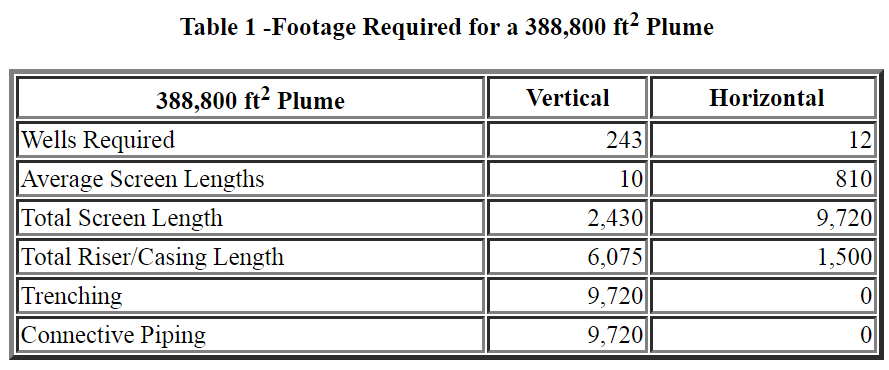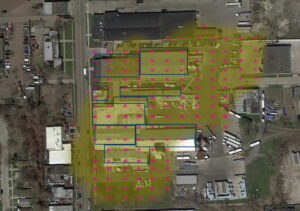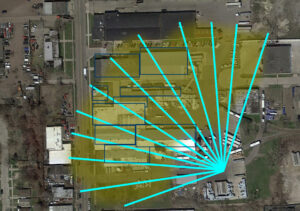Packing the Power of 243 Vertical Wells
With a Radius of Influence (ROI) of 20 feet, 243 vertical wells can cover an area of 388,800 ft square. Depending on plume geometry, this same area can be remediated with as few as 12 horizontal wells. That is the power of a horizontal well system.
Not only will any surface infrastructure and operations be undisturbed during a horizontal well installation, but by removing the need for trenching, plumbing, and site restoration required to connect vertical wellheads costs would be reduced. In many instances, several Horizontal Remediation Wells can be drilled and installed from a single central location – and that means 242 fewer rig moves and set-ups. Take a look at the example below for air sparge wells installed with screens at a depth of 25 feet:

As shown in the table, 12 horizontal wells have four times more screen length and cover the same area as 243 vertical wells with 10-foot screens. This translates to much more contact with the contaminated media, leading to greater transfer rates and faster remediation with horizontal wells. The vertical option would require 9,720 feet of trenching, and connective piping to connect all 243 wellheads. Also, the coverage is more even with horizontal wells, as vertical systems can leave “dead zones” as a result of the radial influence. To reduce these dead zones, vertical systems usually overlap wells, which reduces the effective Radius of Influence.

Figure 1 – Illustration of a 243 Vertical Well Layout showing approximate 20-ft ROI around each well (including boring drilled in the interior of several buildings and under railroad tracking (very likely unfeasible).

Figure 2 –Illustration of 12 Horizontal Well Layout covering the same area as 243 vertical wells (including drilling underneath several buildings and railroad tracks).
Advantages of Horizontal Well Systems
- No disruption to surface operations and facilities.
- Horizontal Wells can be installed in areas where surface obstructions make vertical drilling unfeasible.
- No trenching, connective piping, and subsequent site restoration.
Job completed faster due to less time spent relocating and setting up the directional drill rig. - A horizontal well system would have much more screen footage in contact with contaminated media, reduction in “dead zones.”
- May reduce long-term O&M costs with horizontal wells, due to greater transfer rates with contaminated media